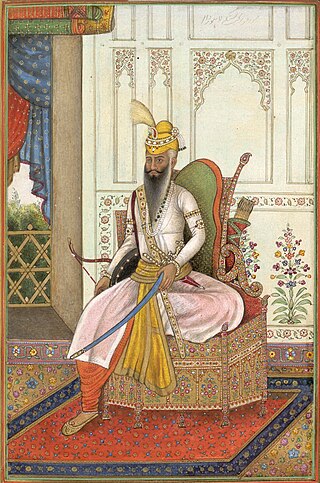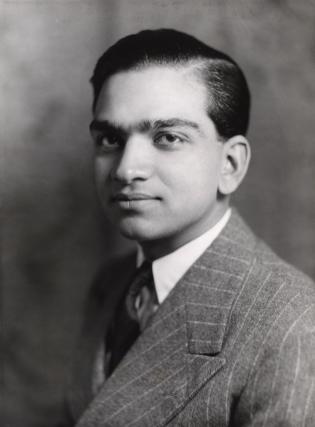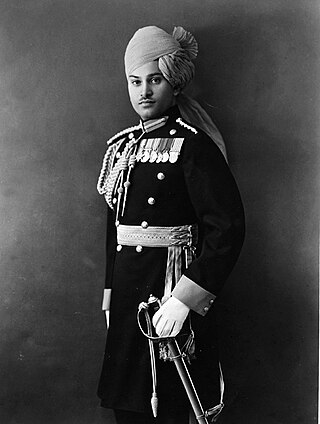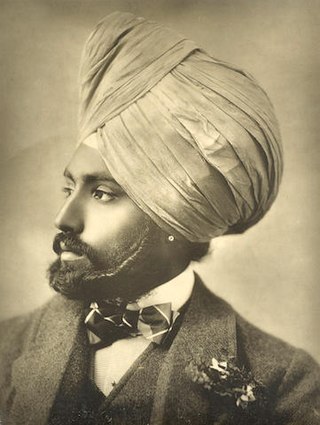
Ranjit Singh, popularly known as Sher-e-Punjab or "Lion of Punjab", was the first Maharaja of the Sikh Empire, which ruled the northwest Indian subcontinent in the early half of the 19th century. He survived smallpox in infancy but lost sight in his left eye. He fought his first battle alongside his father at age 10. After his father died, he fought several wars to expel the Afghans in his teenage years and was proclaimed as the "Maharaja of Punjab" at age 21. His empire grew in the Punjab region under his leadership through 1839.

Gayatri Devi was the third Maharani consort of Jaipur from 1940 to 1949 through her marriage to Maharaja Sawai Man Singh II. Following her husband's signature for the Jaipur State to become part of the Union of India and her step-son's assumption of the title in 1970, she was known as Maharani Gayatri Devi, Rajmata of Jaipur.

Indira Devi was the Maharani of the princely state of Cooch Behar, British India. She was born a princess of Baroda as the daughter of Maharaja Sayajirao Gaekwad III, by his second wife Chimnabai II.

The Kachhwaha, or Kachawa is a Rajput clan found primarily in India.

Cooch Behar, also known as Koch Bihar, was a princely state in India during the British Raj. The state was placed under the Bengal States Agency, part of the Eastern States Agency of the Bengal Presidency. It is located south of the Himalayan kingdom of Bhutan, in present-day West Bengal.

Major General Maharaja Sawai Man Singh II GCSI GCIE was an Indian prince, government official, diplomat and sportsman.

Brigadier Maharaja Sawai Bhawani Singh MVC was an officer in the Indian Army and an entrepreneur.

Rao Raja Hanut Singh was a British Indian Army soldier and polo player.

Shrimant Maharaja Sir Pratap Singh Rao Gaekwad, who belonged to the Gaekwad dynasty of the Marathas, was the ruling Maharaja of Baroda. He succeeded to the throne upon the death of his grandfather Sayajirao Gaekwad III in 1939. In 1947, British India was partitioned into two independent dominions, and Pratap Singh acceded his state to the Dominion of India. By 1949, Baroda had been merged into India.

Sirmur was an independent kingdom in India, founded in 1616, located in the region that is now the Sirmaur district of Himachal Pradesh. The state was also known as Nahan, after its main city, Nahan. The state ranked predominant amongst the Punjab hill States. It had an area of 4,039 km2 and a revenue of 300,000 rupees in 1891.
Fateh Shah was the Hindu Rajput king of Garhwal, a small kingdom in North India, from 1684 to 1716.
The Battle of Bhangani was fought between Guru Gobind Singh's army and Bhim Chand (Kahlur) of Bilaspur on 18 September 1686 or 1688, at Bhangani near Paonta Sahib. An alliance of Rajput Rajas of the Shivalik Hills participated in the engagement on behalf of Bhim Chand of Bilaspur State's side, including the states of Garhwal and Kangra. It was the first battle Guru Gobind Singh, the tenth Sikh Guru, fought at the age of 19.

Maharajah Sir Ranbir Singh was the Maharaja of Jind. He ruled Jind from 1887 to 1948.

Padmanabh Singh is an Indian Polo player and member of the erstwhile royal family of the Jaipur State.
Mat Prakash, also known as Medini Prakash, was a king of Sirmur State in present-day Himachal Pradesh, India. He ruled from 1684 until his death in 1704.
Siokot was a state in India that preceded the princely state of Mandi, which was founded in 1527. Formerly part of the Kingdom of Suket in the Punjab Hills, the rajput dynasty traditionally goes back to 765 AD. In about 1100, Vijaya Sen had two sons, Sahu Sen who ruled over Suket and Bahu Sen who ruled over Kullu. Bahu Sen's descendants emigrated to Kullu until the tenth descendant, Kabakha Sen was killed by the Raja of Kullu and his son had to flee to Siokot, not very far from the present city of Mandi, Himachal Pradesh, which was founded during Ajbar Sen's rule.
Raja Sir Surendra Bikram Prakash Bahadur, was a Raja of the princely state of Sirmur from 1898 until his death in 1911.
Amar Prakash, K.C.S.I., K.C.I.E., was the Maharaja of Sirmur State from 1911 until 1933.

Padmini Devi is the titular Rajmata of Jaipur.













